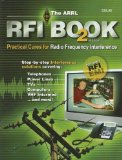In this video I go through the theory of HF radio wave propagation. In part 2 of this video I’ll do a practicle demonstation of shortwave radio reception through various radios and antennas / antenna tuner. Concepts covered n this HAM radio tutorial: * Ground wave propagation * Sky wave propagation * Ionosphere layers D, E, F * Radio wave skip and hop zones * Pedersen Ray * EME Earth Moon Earth radio communications * Long path and short path radio waves Equipment used / mentioned in this video series: * K-Po WR2100 PLL Synthesized World Band Receiver. * Tecsun (Kaito) PL-389MP Short Wave radio * Yaesu FT-897 HF/VHF All Mode Transceiver * Yaesu FT-950 HF / 50MHz band All Mode Transceiver * Yaesu VX-6 Submersible Dual-Band FM Transceiver * Yaesu FT-817ND solar powered portable go-pack * Yaesu FRG-7000 Receiver * RigExpert AA-200 Antenna analyzer * Simple wire antenna * Par electronics Par End-Fedz EF-10-20-40 full length half wave dipole * Buddipole™- hf/vhf portable dipole antenna system * MFJ Deluxe Travel Antenna Tuner – MFJ-904H * Amateur Extra HAM radio license – KD8LON


Cant wait for the demonstration with different radios and antennas! Love the series and your channel! Great job!
Many thanks, I appreciate the feedback.
3:58 Whoa a 80 metre Wave, I always thought that radio frequencies waves as being very short, (long or short wave) say about 1mm or less
Thanking You 200 MHz LOL
Thank you for the lesson 😉
17:35 And may be Sun Spots 🙂
Yup…and even longer…Thanks for watching!
My pleasure, thanks for watching.
…and aeroplanes and rockets believe it or not…
Bounce a signal off a aeroplane, (RADAR), sending a song “I’m ‘talking’ ‘off’ a jet plane, don know when I’ll be back again” (John Denver) LOL
I think the Earths magnitic field changes a bit from time to time as well.
I’ll like you to do a video of how why the ionosphere is there, how it stays there, what it is made of, etc.
Looks like you have a smart rig.
Many years, (too many), I was told you had to learn morse code to get a license for Ham Radio, still apply?
That made me chuckle!
They dropped morse code from the license some time ago…it has been a point of contention amongst some of the HAM community.
“I am Old School, LOL in Morse code is: Argh!!! YT won’t allow Morse typing here, new fangled stuff 🙂
No; I don’t eat Ham 🙂 but Is still good video’s to see for me
I’m delighted to see this topic being covered. It is indeed a big factor, both the limitations and nussence for HAM operators to send their radio waves as far as possible. Take for example during the Haiti earthquake emergency. I feel honoured to be mentioned in your video Martin and may the series continue 🙂
For those who read the coments, I use a Navtex receiver which is fitted to all merchant vessels by law. They are tuned to receive MF or ‘Ground wave’ transmissions at 518kHz. They do tend to follow the curvature of the earth as Martin stated already with ranges on average between to 400 to 500 miles in ideal conditions. The ground wave is ideal for us in the maritime sector as when we are out of VHF range we tune into the MF band and when that’s out we can use HF or satelite. Long live radio.
My pleasure and thanks for your very interesting input on Ground waves. Cheers, Martin.
That is so superb!I like it very very much!
Keep it up body!
Thanks for you comment….more to come soon. Cheers, Martin.
thanks, you would make a good teacher.
hehe my vhf signal bounces well off the jumbo’s that fly over head.. I often get the comment on 2m simplex, “Ben, your S9 60+. Did a plane just go over?” (slight pause as plane approaches). Key up “Yep, here she comes” and hold mic out the back door. We all get a good laugh as I am normally an S9 to the group of guys I normally chat to. I think once I get a 2m antenna with better gain, they’ll think POL-AIR is hovering overhead 😛
LOL!!! Classic! Thanks for watching and posting – Martin.